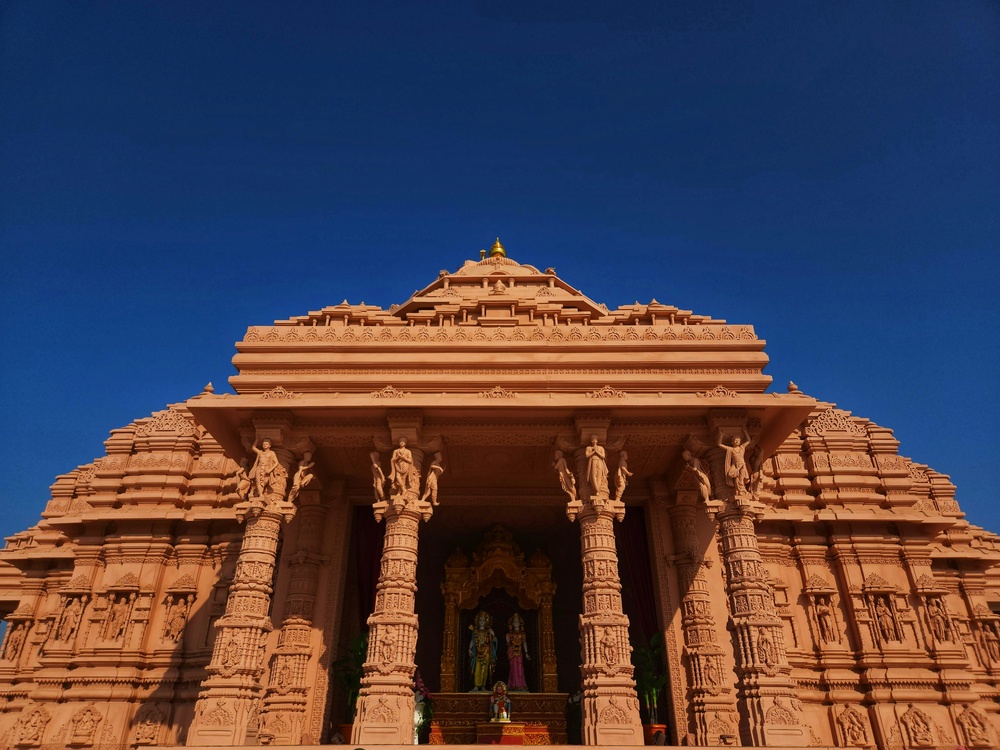Ayodhya, nestled on the banks of the sacred Saryu River in Uttar Pradesh, is among the most revered spiritual destinations in India. Known as the birthplace of Lord Rama, this city is rich in mythology, history, and timeless devotion. From ancient temples and peaceful ghats to historical monuments, Ayodhya tourist places offer travellers a spiritually enriching and culturally immersive experience. Here is a detailed guide to the best temples, ghats, and historical sites you must explore on your journey to Ayodhya.
1. Ram Janmabhoomi Temple
The Ram Janmabhoomi Temple is the most prominent among all Ayodhya tourist places. It marks the birthplace of Lord Rama and stands as a symbol of devotion and faith for millions. The newly constructed grand temple is architecturally magnificent, with intricate carvings and towering spires. Pilgrims visit to seek blessings, offer prayers, and witness this historic landmark that reflects the spiritual soul of Ayodhya.
2. Hanuman Garhi
Another unmissable temple is Hanuman Garhi, dedicated to Lord Hanuman. Situated atop a small hillock, it is believed that Lord Hanuman protected Ayodhya from here. You need to climb approximately 76 steps to reach the temple. The idol of Lord Hanuman here depicts him with Lord Rama and Sita on his lap. Devotees visit Hanuman Garhi to seek his protection and blessings before visiting other temples in Ayodhya.
3. Kanak Bhawan
Kanak Bhawan is among the most beautiful temples in Ayodhya, located near Ram Janmabhoomi. This temple was gifted to Goddess Sita by Queen Kaikeyi after her marriage to Lord Rama. The temple houses charming golden-crowned idols of Lord Rama and Sita adorned in rich attire. Its colourful architecture, peaceful surroundings, and devotional atmosphere make it one of the most loved Ayodhya tourist places for devotees and tourists alike.
4. Nageshwarnath Temple
The ancient Nageshwarnath Temple is dedicated to Lord Shiva and holds great religious significance in Ayodhya. According to legends, Kush, son of Lord Rama, established this temple. It is especially popular during Mahashivratri when devotees gather to offer prayers and participate in rituals. Its towering spire and serene premises make it a spiritually uplifting site to visit.
5. Treta Ke Thakur
Treta Ke Thakur is a historical temple believed to be built at the site where Lord Rama performed the Ashwamedha Yagna. The temple houses black stone idols of Lord Rama, Sita, Lakshmana, Bharat, Shatrughna, and Hanuman dating back to the Treta Yuga. It opens only on special occasions and Ekadashi, attracting pilgrims eager to witness its spiritual and historical significance.
6. Dashrath Mahal
Dashrath Mahal is the royal palace where King Dashrath, father of Lord Rama, lived with his family. Located close to Ram Janmabhoomi, the palace features ornately decorated halls, shrines, and idols of Lord Rama, Sita, Lakshmana, Bharat, and Shatrughna. It is an important site among Ayodhya tourist places, offering a glimpse into the royal heritage and devotional traditions of the city.
7. Saryu River and Ram ki Paidi
No visit to Ayodhya is complete without experiencing the serenity of the Saryu River. Ram ki Paidi is a series of ghats constructed along the river for pilgrims to take holy dips. The ghats are beautifully maintained, and the evening Saryu aarti with glowing lamps and chanting priests is a divine spectacle. Visitors often spend peaceful hours here meditating, watching rituals, or enjoying the cool river breeze.
8. Guptar Ghat
Guptar Ghat is another important spot on the banks of the Saryu River. It is believed that Lord Rama took Jal Samadhi here, leaving his earthly form and ascending to Vaikuntha. The ghat has small temples dedicated to Lord Rama with his footprints engraved in stone. Its tranquil environment, river views, and spiritual aura make it an ideal place for meditation and reflection.
9. Mani Parvat
Mani Parvat is a small hillock in Ayodhya believed to be a part of the mountain carried by Lord Hanuman during the Sanjeevani episode. It has a small temple dedicated to Lord Hanuman on its summit. From here, you get panoramic views of Ayodhya city and the surrounding landscape. Its mythological significance, scenic beauty, and peaceful surroundings attract pilgrims and nature lovers alike.
10. Tulsi Smarak Bhawan
Tulsi Smarak Bhawan is dedicated to the great poet-saint Goswami Tulsidas, who composed the Ramcharitmanas. It functions as a cultural and research centre housing a library and museum showcasing his works and life. The bhawan regularly hosts Ram Katha recitals, devotional music sessions, and cultural programs, making it a significant place for those interested in literature, spirituality, and the teachings of Ramayana.
Conclusion
These Ayodhya tourist places together weave a rich tapestry of devotion, mythology, history, and cultural heritage. Whether you visit for pilgrimage or to experience India’s spiritual roots, the temples, ghats, and historical sites of Ayodhya will fill you with peace and reverence. Plan your journey to these sacred sites to immerse yourself in the timeless divinity of Ayodhya and carry back memories of faith, devotion, and cultural grandeur that will stay with you forever.



